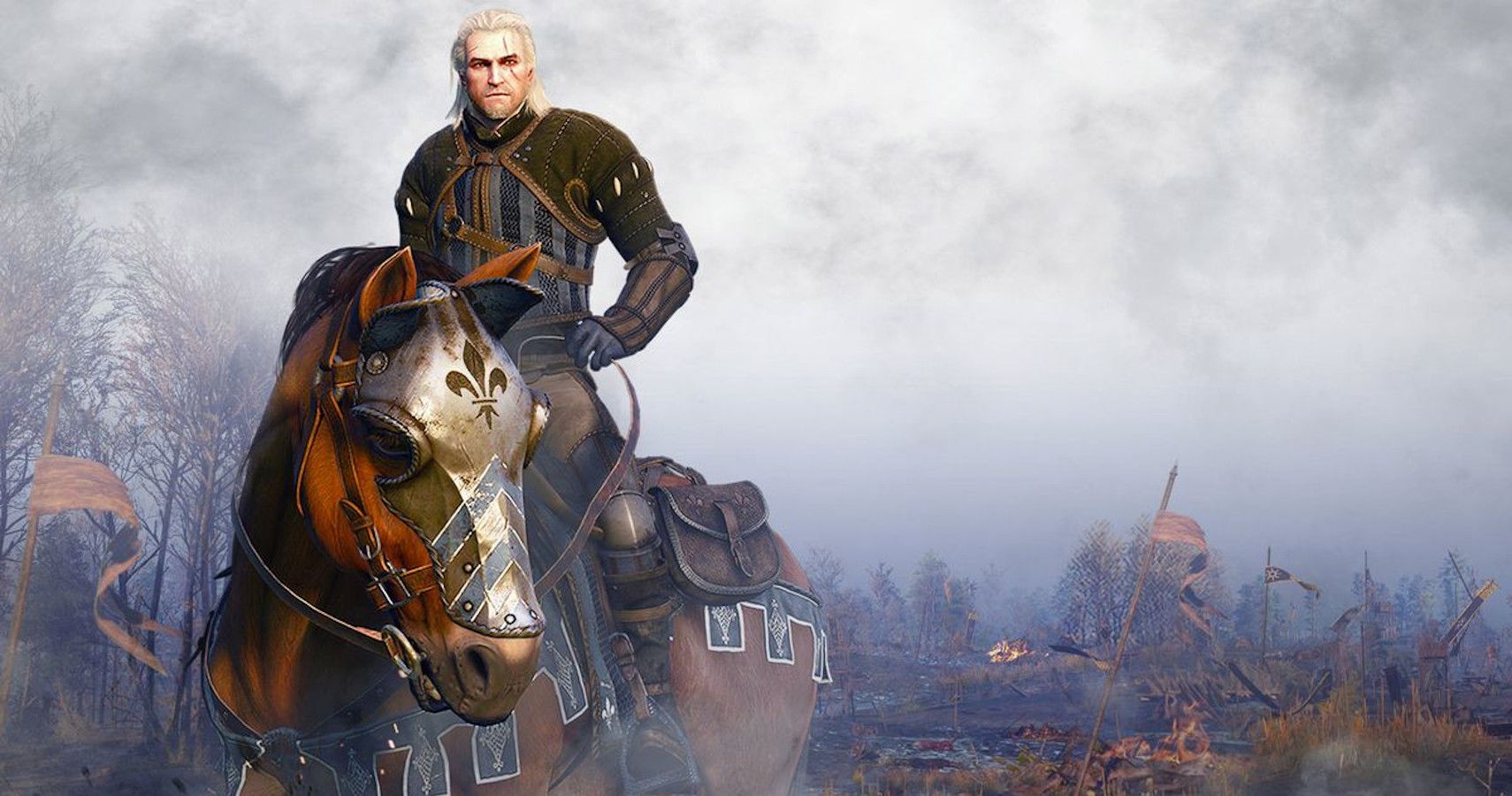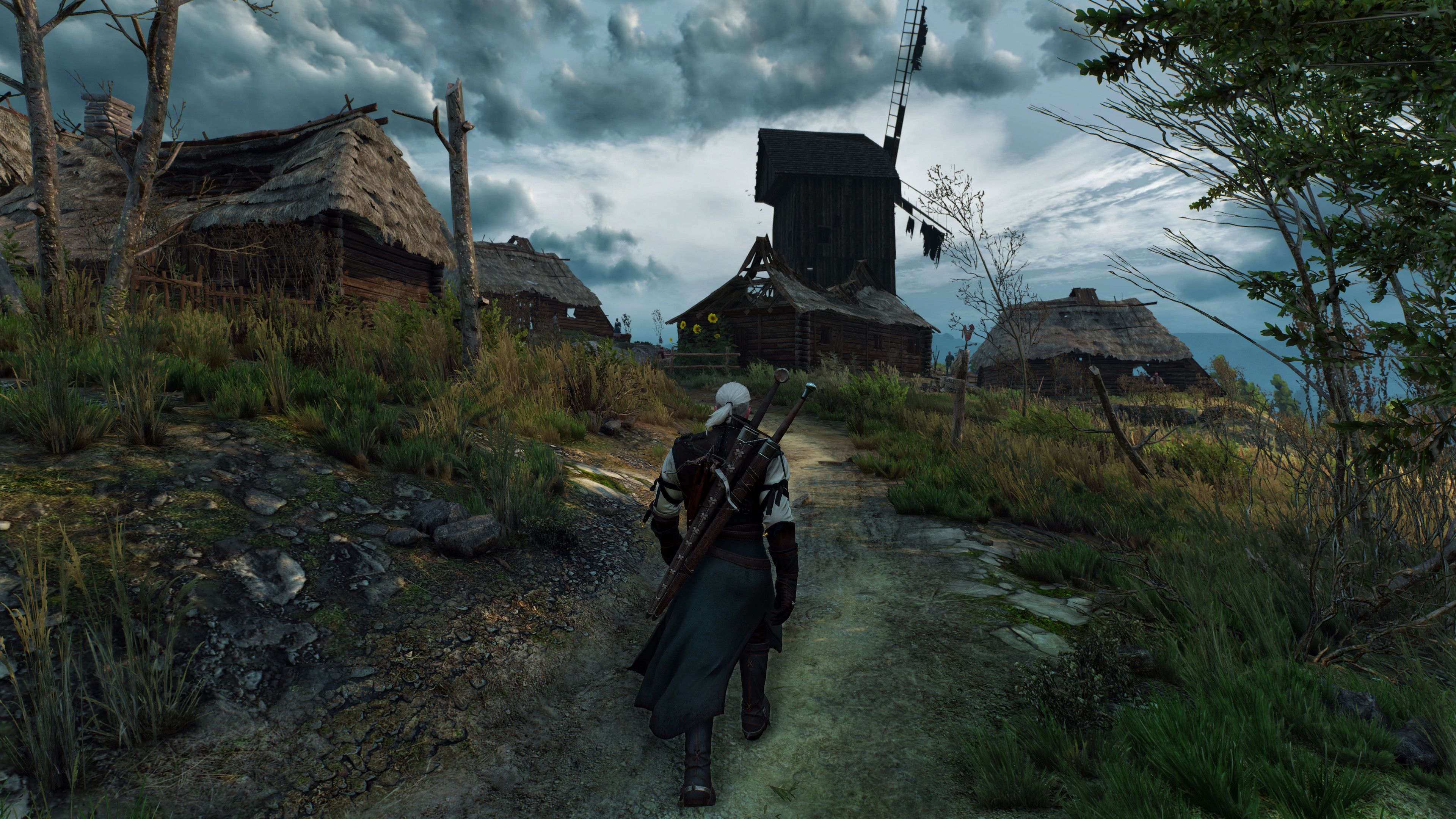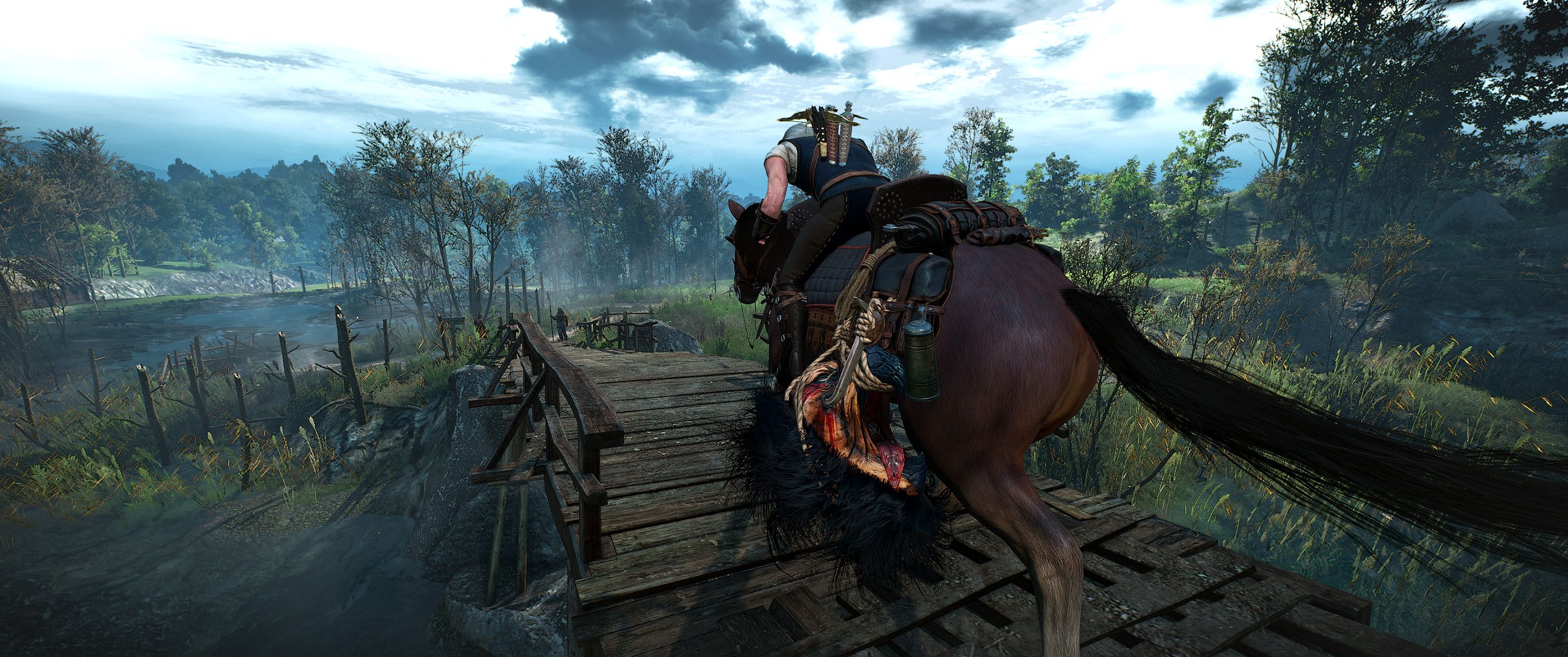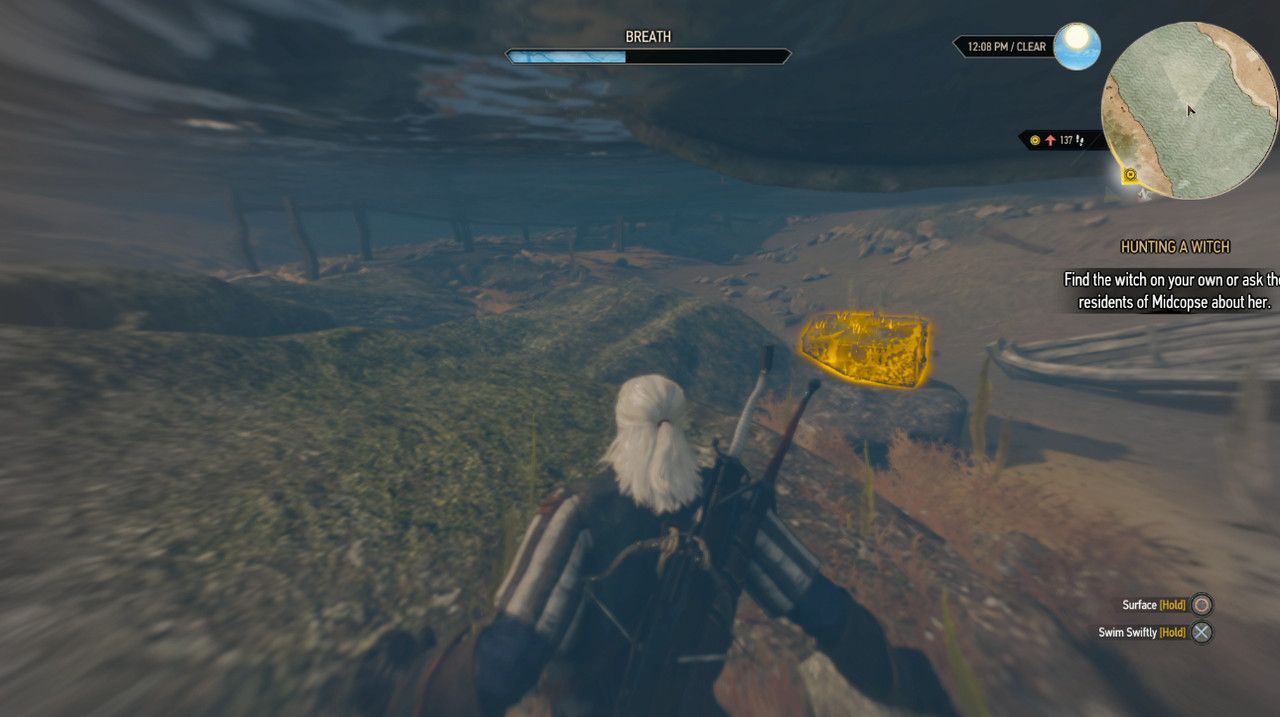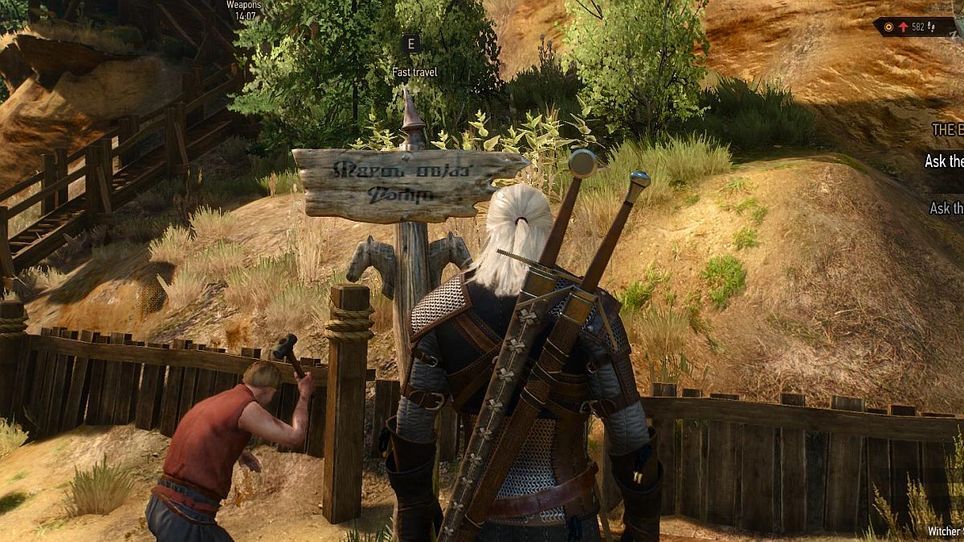There are multiple means of travel in The Witcher 3, all benefitting Geralt in different scenarios, respectively. This guide will cover the mechanics of each travel mode and when they best suit Geralt's needs.
Players will reference the map consistently throughout the game, but it's not a single map detailing the whole Continent. The World Map consists of several regional maps, which are not all initially unlocked at the start of the game. Not to worry, though, the various regions are made available as Geralt progresses through the main storyline, inciting a need for varying forms of travel early on.
On Foot
Traveling on foot is the first and most common way Geralt will get around. The basic directional and acceleration controls on foot will also apply to any other travel means, aside from Fast Traveling.
- Direction: "AWDS" keys (PC), Left Analog-Stick (Consoles)
- Sprint: Left Shift (PC), Hold A (Xbox, Switch), Hold X (PS4)
- Jump: Spacebar (PC), B ( Xbox, Switch), Circle (PS4)
Geralt will find his own two feet most beneficial in areas such as small villages or crowded cities, where navigating the streets astride Roach can prove cumbersome. Actions such as looting and gathering of herbs are only achievable on foot as well.
It's also smart to approach most combat scenarios on foot. While rudimentary mounted combat is available, it's not a sustainable style for Geralt, and dismounting leaves him temporarily defenseless.
Riding Roach
Geralt can ride any readily saddled horse- with a few exceptions- but Roach is Geralt's faithful companion who can be called to his side nearly anywhere. There are a few exceptions to this as well, but attempts will be met with in-game text if this is the case.
Basic controls for Roach are the same as on foot. Unlike Geralt, Roach is capable of two accelerated speeds. A leisurely canter is performed the same way as sprinting with Geralt and doesn't require Roach's stamina; galloping does, on the other hand.
- Call Roach: X (PC), press the Left Analog-stick twice (Xbox, Switch), press L3 twice (PS4)
- Mount: E (PC), A ( Xbox, Switch), X (PS4)
- Gallop (Sprint): Left Shift (PC), press A twice (Xbox, Switch), press X twice (PS4)
- Dismount: E (PC), hold B (Xbox, Switch), hold Circle (PS4)
Horses are helpful when traveling through dangerous territories, putting a greater distance between Geralt and any skull-marked adversaries. But be wary of a horse's fear level in areas of immediate danger, lest it spooks and throws Geralt somersaulting into enemies.
Horses can maintain a sprint much longer than Geralt could on his own, making for an easier getaway. Additionally, Geralt may use his swords for basic mounted combat and stands the chance of instantly striking enemies down when riding past them at full speed.
With their ability to maintain breakneck speeds, horses can cut travel time significantly. This is important because Fast Travel is not always readily available.
Swimming
The Continent consists vastly of water, from the frozen seas of Skellige to the waterways running through the Northern Kingdoms. Several quests will even require Geralt to submerge in order to navigate areas such as underwater caves.
The waterlogged routes impede foot and mounted treks alike, however the watery depths harbor treasures worthy of a swim. Troves of equipment and valuable items may be retrieved from Smugglers Caches, and underwater plants supply alchemy ingredients unattainable on land.
- Dive: C (PC), Hold X (Xbox, Switch), Hold Square (PS4)
- Surface: Spacebar (PC), Hold B (Xbox, Switch), Hold Circle (PS4)
Fast Travel
Fast travel is undoubtedly the most efficient, but Geralt will first have to discover the destinations marked by signposts in the open world. Signposts can typically be found within cities and villages, posted just outside the gates of these communities, or in the wild - usually at a crossroads.
Interacting with signposts opens the World Map. From there, Geralt may travel to any other previously discovered signpost.
Boats also provide a form of fast travel. These harbor-bound locations appear on the map as anchors instead of signposts. Similarly, however, both variants require discovery before the individual waypoint is fast travel accessible. The fast travel mechanic is not cohesive between harbors and signposts, as boats are restricted to nautical routes.
While boats open the way to most nautical passages, traveling to Skellige for the first time is tied to a main quest, requiring 1,000 crowns. Players who're having difficulties navigating these naval machines can check out TheGamer's full guide on how to use boats.
Geralt has many options for journeying to and fro across the Continent, all proving a great benefit when used in the right scenario. The Witcher is always most comfortable relying on a good pair of boots or his surefooted mount, but he's not opposed to city-hopping or the occasional swim either. Just don't expect him to use those fickle sorceress-crafted portals too often.
Source: GosuNoob, Game Pressure, Gamer Heroes

